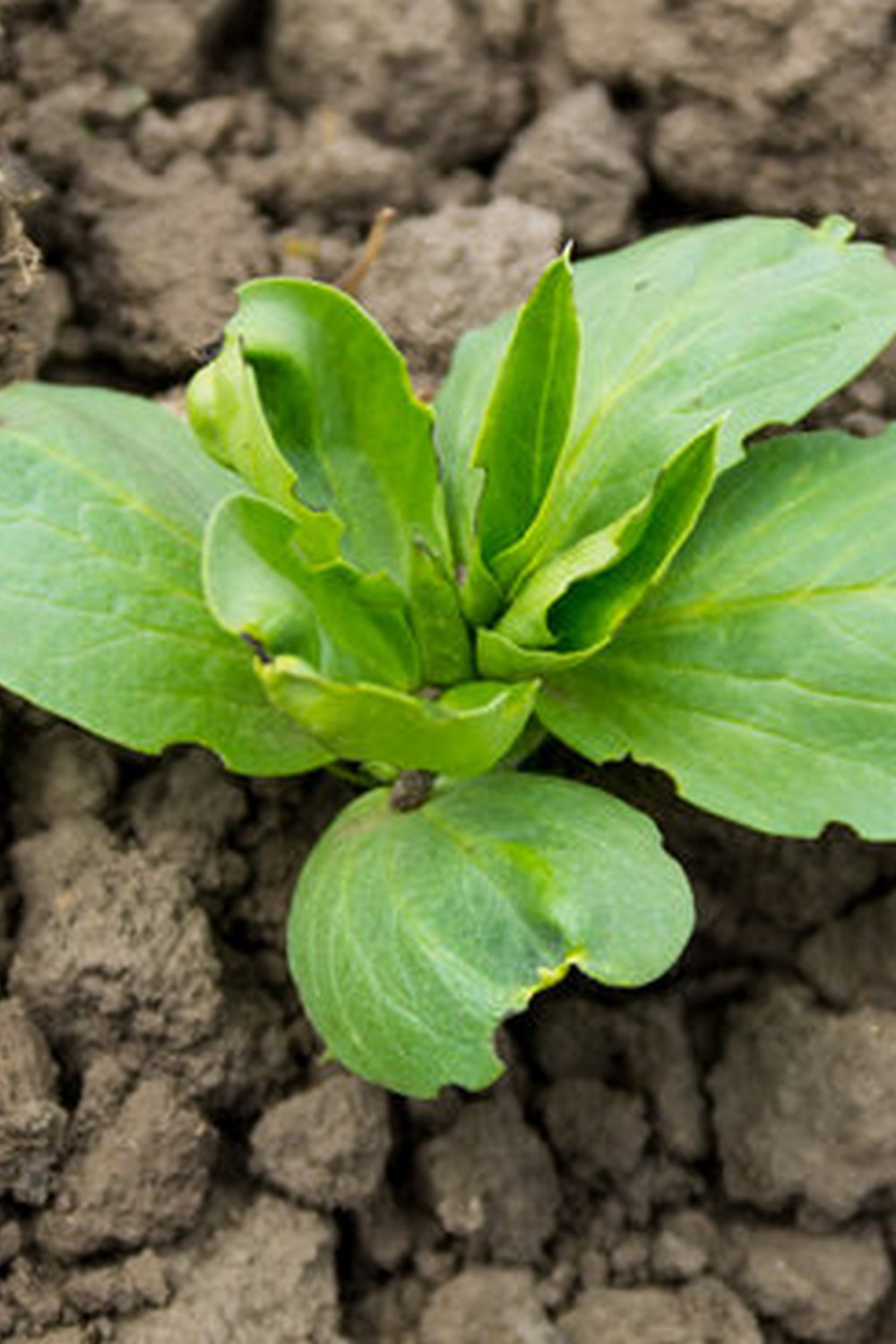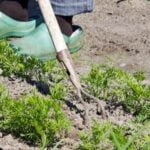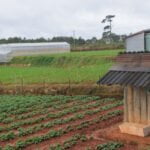Are you interested in vegetable gardening in cold climates? While it may seem challenging, with the right knowledge and techniques, it is possible to grow a thriving garden even in colder regions.
In this article, we will explore the basics of cold climate vegetable gardening, including choosing the right vegetables, soil preparation, protection from frost, and tips for success. Whether you are a beginner or an experienced gardener looking to expand your skills, this guide will provide valuable insights into successful vegetable gardening in cold climates.
When it comes to vegetable gardening in cold climates, selecting the right vegetables is crucial for a successful harvest. Not all plants are suited for cooler temperatures, so it’s essential to choose varieties that can thrive in the specific conditions of your region.
From hardy greens to cold-tolerant root vegetables, there are plenty of options available for cold climate gardeners. Understanding which vegetables are best suited for your area will set the foundation for a productive and rewarding garden.
In addition to plant selection, preparing the soil is another vital aspect of cold climate vegetable gardening. Cold temperatures can impact soil quality and fertility, so it’s important to ensure that the soil is well-nourished and capable of supporting healthy plant growth. By taking the time to properly prepare the soil before planting, you can create an ideal environment for your vegetables to thrive despite the challenges of colder weather.
Choosing the Right Vegetables for Cold Climates
When it comes to vegetable gardening in cold climates, choosing the right vegetables is crucial for a successful harvest. Not all vegetables can withstand the chilly temperatures and potential frost that come with colder regions. However, there are plenty of hardy vegetables that thrive in these conditions and can still be grown with success.
One of the most popular choices for cold climate vegetable gardening is root vegetables such as carrots, beets, and turnips. These sturdy plants can endure the cold and even benefit from a touch of frost, which can improve their flavor. Additionally, leafy greens like spinach, kale, and Swiss chard are also excellent options for cold climates as they can tolerate lower temperatures.
It’s important to consider the average first and last frost dates in your area when selecting vegetables for your garden. This will help you determine which crops have enough time to mature before the cold sets in. By choosing the right vegetables for your cold climate garden, you’ll set yourself up for a bountiful harvest despite the challenging weather conditions.
| Vegetable | Best Growing Conditions |
|---|---|
| Carrots | Cool temperatures, well-drained soil |
| Kale | Tolerates frost, prefers full sun |
| Turnips | Cold-hardy, quick-growing |
Preparing the Soil for Cold Climate Vegetable Gardening
When it comes to vegetable gardening in cold climates, preparing the soil is essential for successful plant growth. Cold climate soils tend to be compacted and nutrient-deficient, making it challenging for plants to thrive. However, with the right soil preparation, you can create a healthy environment for your vegetables to grow.
Testing and Amending the Soil
Before planting any vegetables, it’s important to test the soil in your garden. A simple soil test will determine its pH level and nutrient content, allowing you to make informed decisions about which amendments are needed. In cold climates, soil tends to be acidic, so adding lime to raise the pH may be necessary. Incorporating organic matter such as compost or aged manure also helps improve soil structure and fertility.
Creating Raised Beds
In cold climates with heavy clay soils that can be slow to warm up in spring, creating raised beds can provide many benefits for vegetable gardening. Raised beds drain well and warm up faster than traditional garden beds, giving you a head start on planting in the spring. Additionally, they allow you to easily control the quality of the soil by filling them with high-quality compost and topsoil.
Adding Mulch
Mulching is particularly important in cold climate vegetable gardening as it helps regulate soil temperature and moisture levels. Adding a layer of mulch around your plants helps keep roots warm during cool periods while retaining moisture during dry spells. Organic mulches such as straw or shredded leaves also break down over time, enriching the soil with valuable nutrients.
By taking these steps to prepare your soil for vegetable gardening in a cold climate, you can set the stage for a successful growing season. Working with your unique climatic conditions rather than against them will ultimately lead to healthier plants and a more bountiful harvest.
Protecting Plants From Frost and Cold Temperatures
When vegetable gardening in cold climates, protecting plants from frost and cold temperatures is essential to ensure a successful harvest. Frost and freezing temperatures can be detrimental to delicate vegetable plants, so taking measures to protect them is crucial.
Covering Plants
One effective method for protecting plants from frost and cold temperatures is to cover them with blankets, cloths, or specially-designed garden row covers. These covers help to trap the heat from the soil and keep the plants sheltered from the freezing air. It’s important to secure the covers in place so that they don’t blow away in the wind.
Using Mulch
Applying a layer of mulch around the base of vegetable plants can also provide insulation and protection from frost. Mulch helps to regulate soil temperature, preventing rapid fluctuations that can harm plant roots. Organic materials such as straw, leaves, or compost can be used as mulch to protect vegetable plants in cold climates.
Utilizing Cold Frames or Cloches
Cold frames and cloches are structures that provide individual protection for plants. They act as mini-greenhouses, capturing warmth during the day and releasing it at night to shield the plants from freezing temperatures. These tools can extend the growing season for vegetables by creating a microclimate that protects them from harsh weather conditions.
By employing these methods for protecting plants from frost and cold temperatures in a cold climate vegetable garden, gardeners can increase their chances of a bountiful harvest despite challenging weather conditions.
Extending the Growing Season in Cold Climates
One of the biggest challenges for vegetable gardening in cold climates is the limited growing season. However, there are several techniques that can be used to extend the season and maximize the harvest.
One effective method for extending the growing season in cold climates is by using season extenders such as row covers, cold frames, hoop houses, and greenhouses. These structures provide protection from frost and cold temperatures, creating a more favorable environment for plants to thrive. Additionally, using mulch can help regulate soil temperature and protect plant roots from extreme cold.
Another way to extend the growing season is by planting cold-hardy vegetable varieties that can withstand cooler temperatures. Some examples of cold-tolerant vegetables include kale, spinach, carrots, beets, and Brussels sprouts. By choosing the right vegetables for cold climates, gardeners can ensure a longer harvest period.
In addition to using season extenders and selecting appropriate vegetable varieties, succession planting can also help prolong the growing season. This involves staggering plantings at different times to ensure a continuous supply of fresh produce throughout the season. By utilizing these techniques, it is possible to overcome the challenges of vegetable gardening in cold climates and enjoy an extended growing season with bountiful harvests.
| Technique | Benefit |
|---|---|
| Season Extenders (row covers, greenhouses) | Provide protection from frost and create a favorable environment for plant growth |
| Cold-Hardy Vegetable Varieties | Can withstand cooler temperatures and prolong the harvest period |
| Succession Planting | Ensures a continuous supply of fresh produce throughout the growing season |
Tips for Successful Cold Climate Vegetable Gardening
When it comes to vegetable gardening in cold climates, there are a few tips and tricks that can help ensure a successful harvest, despite the challenging conditions. Firstly, it’s important to start with the right vegetables. Opt for cold-hardy varieties that can withstand lower temperatures and even frost. Some examples of these resilient vegetables include carrots, radishes, kale, and Brussels sprouts.
In addition to choosing the right vegetables, it’s essential to pay close attention to soil preparation. Cold climate vegetable gardening often requires amending the soil with organic matter to improve its structure and fertility. This helps create an environment where plants can thrive despite the colder temperatures.
Another key aspect of successful vegetable gardening in cold climates is protecting plants from frost and cold temperatures. This can be done through various means such as using row covers, cloches, or even constructing a simple cold frame to shield plants from harsh weather conditions. Additionally, planting in raised beds can help improve drainage and warm up the soil more quickly in spring.
Overall, successful vegetable gardening in cold climates requires careful planning, proper plant selection, attentive soil preparation, and protective measures against frost and cold temperatures. By following these tips, gardeners can embrace the challenge of growing their own food in less-than-ideal conditions and enjoy a bountiful harvest despite the odds.
Cold Climate Vegetable Gardening Tools and Equipment
When it comes to vegetable gardening in cold climates, having the right tools and equipment can make all the difference in ensuring a successful harvest. Here are some essential items to consider adding to your gardening arsenal:
- Cold frames or row covers: These protective coverings can help shield your plants from harsh winds, frost, and freezing temperatures, creating a microclimate that is more conducive to plant growth.
- Quality garden hand tools: Invest in high-quality trowels, pruners, and other hand tools that can withstand the rigors of cold weather gardening.
- Mulch: A generous layer of mulch can help insulate the soil, regulate its temperature, and retain moisture, all of which are crucial for vegetable gardening in cold climates.
In addition to these basic tools and equipment, consider incorporating technology into your cold climate vegetable gardening routine. For example:
- Soil thermometers: These handy devices can help you monitor soil temperature and determine the best time for planting various vegetable crops.
- Portable heaters or heat lamps: For particularly cold nights, having a source of supplemental heat can protect sensitive plants from damage due to freezing temperatures.
By having these tools and equipment at your disposal, you’ll be better equipped to tackle the unique challenges of vegetable gardening in cold climates and maximize your growing season. With proper preparation and the right gear, you can enjoy a bountiful harvest despite the chilly conditions.
Remember to regularly maintain and store your tools properly during off-seasons so that they remain reliable when it’s time for another round of vegetable gardening in cold climates.
Success Stories From Cold Climate Vegetable Gardeners
When it comes to vegetable gardening in cold climates, many gardeners have faced the challenge and succeeded in growing a variety of delicious and nutritious vegetables. Here are some inspiring success stories from cold climate vegetable gardeners:
- Heather, a resident of Minnesota, has been successfully growing vegetables in her cold climate garden for years. Despite the harsh winters, she has managed to grow vegetables such as carrots, kale, and Brussels sprouts by utilizing protective covers and cold frames. Heather’s dedication to her garden has resulted in an abundant supply of fresh produce throughout the year.
- Jackson, from Alaska, has mastered the art of extending the growing season in his cold climate garden. By using techniques such as mulching, row covers, and building raised beds, Jackson is able to start planting earlier in the spring and continue harvesting well into the fall. His innovative approach has allowed him to enjoy a diverse selection of vegetables despite the challenging climate.
- Sarah and Tom, a couple living in Canada, have found success in choosing the right vegetables for their cold climate garden. They have focused on growing cold-hardy varieties such as spinach, broccoli, and peas that can withstand low temperatures. By selecting the appropriate vegetables for their region, Sarah and Tom have been able to consistently harvest bountiful crops even during frosty conditions.
These success stories serve as a testament to the possibilities of vegetable gardening in cold climates. With careful planning, perseverance, and the right techniques, it is possible to enjoy a thriving vegetable garden even in chilly regions.
Conclusion
In conclusion, vegetable gardening in cold climates can be a challenging but ultimately rewarding endeavor. While the harsh temperatures and shorter growing seasons may seem discouraging, with the right approach and preparation, it is absolutely possible to cultivate a thriving garden. By carefully selecting cold-hardy vegetables, properly preparing the soil, and utilizing protective measures against frost and cold temperatures, gardeners can successfully grow an abundance of fresh produce even in colder regions.
It is important for gardeners in cold climates to embrace the challenge and make use of techniques such as using row covers or cold frames to extend the growing season. Additionally, success stories from experienced cold climate vegetable gardeners serve as inspiration for novices looking to venture into this specialized type of gardening. By sharing their knowledge and experiences, these seasoned gardeners offer valuable tips and advice that can help others achieve success in their own cold climate vegetable gardens.
Ultimately, vegetable gardening in cold climates is not without its challenges, but it offers unique rewards that make it well worth the effort. Embracing this challenge allows gardeners to enjoy the fruits of their labor while also gaining a sense of accomplishment from overcoming the obstacles presented by colder growing conditions. With the right knowledge, tools, and perseverance, anyone can experience the joy of harvesting fresh produce from their own cold climate vegetable garden.
Frequently Asked Questions
What Temperature Is Too Cold for Vegetable Garden?
The temperature that is too cold for a vegetable garden depends on the specific vegetables being grown. However, in general, most vegetables cannot tolerate temperatures below 32 degrees Fahrenheit, as they risk frost damage and even death.
What Vegetables Grow Best in Cold Weather?
Some of the vegetables that grow best in cold weather include kale, spinach, lettuce, carrots, radishes, turnips, and Brussels sprouts. These vegetables are able to withstand lower temperatures and even benefit from the cooler climate by becoming sweeter or more flavorful.
Can Vegetables Grow in 50 Degree Weather?
Many vegetables can still grow in 50-degree weather, especially those that are considered cold-weather crops. While some warm-season vegetables may struggle or grow slower in these conditions, cooler temperature-tolerant vegetables like broccoli, cauliflower, cabbage, and peas can thrive in 50-degree weather.

If you’re looking to get into vegetable gardening, or are just looking for some tips on how to make your current garden better, then you’ve come to the right place! My name is Ethel and I have been gardening for years. In this blog, I’m going to share with you some of my best tips on how to create a successful vegetable garden.





